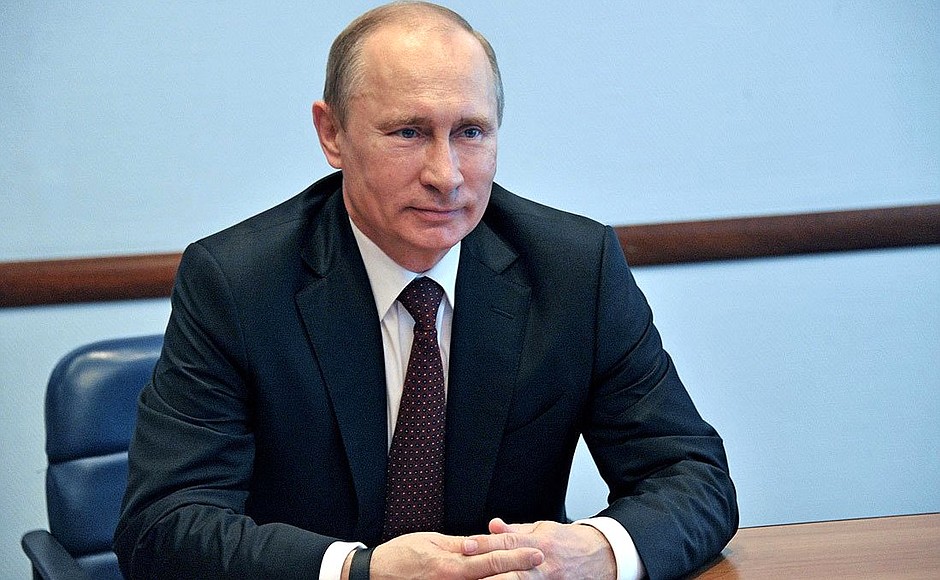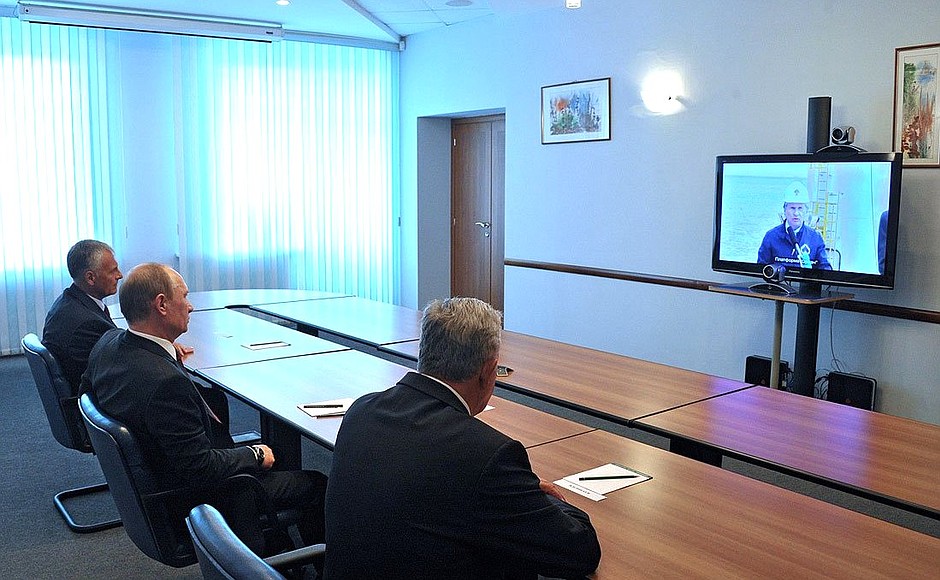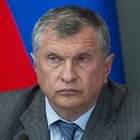Vladimir Putin: Good afternoon colleagues.
Can you hear me?
Igor Sechin: Hello, Mr President, we can see and hear you.
Vladimir Putin: I send my greetings to you all. Work at sites such the one you are at now is the start of a new stage in the Russian energy sector’s development and development of offshore production.
We are yet going to discuss Sakhalin Region’s development, and the most important part of its economy – the energy sector. First of all though, I want to thank everyone who worked at Orlan, everyone who got this project to where it is today, and I hope that your colleagues from other companies will follow your example. I wish you success.
Go ahead, Mr Sechin.
Igor Sechin: Thank you very much.
Good afternoon, once again, Mr President. It is a pleasure to greet you from the Orlan drilling platform here in the Sea of Okhotsk. This is an enormous construction built for Arctic conditions and equipped with unique technology. It began operation in 2005, when work began to develop the Chaivo oilfield on the Sakhalin shelf. The platform is 100 by 90 metres in area and weighs around 70,000 tons. It can withstand extremely low temperatures, earthquakes of up to 8 degrees, and waves up to 13 metres high. Its 14-megawatt energy supply and heavy drilling installation with capacity of up to 750 tons and 2,300 horsepower drive make it possible to achieve maximum production on the platform of 23,000 tons a day, keeping 20 wells working, each of which can deviate by up to 13 kilometres on the horizontal axis.
You can’t see anything behind me now because of the fog, but around 10 kilometres away from here are the foundations for a second drilling platform that will start operation as part of the Sakhalin-1 project next year. The platform’s foundations already have a mass weight of 150,000 tons and the platform is designed to drill and operate 46 wells. Mr President, this platform is only one of its kind in the world.
“I want to thank everyone who worked at Orlan, everyone who got this project to where it is today, and I hope that your colleagues from other companies will follow your example.”
Our partners in the project are working together with us on the platform today – the heads of ExxonMobil, headed by President of Exxon Development Neil Duffin.
Sakhalin-1 is the first and biggest offshore project in Russia already in operation today. The project’s three fields hold total useful reserves of 218 million tons of oil and 465 billion cubic metres of gas. Total production to date comes to 58 million tons of oil and 12 billion cubic metres of gas. The project has already brought in around $8 billion in budget revenue.
Rosneft has licenses for 20 offshore Arctic fields overall in Eastern Siberia and the Far East, and is currently carrying out large-scale exploration work at these sites. Two seismological research vessels from Dalmorneftegeofizika are currently carrying out geological prospecting for the Magadan-1, Magadan-2, and Magadan-3 projects on the Magadan shelf. Similar offshore work is underway at the Sakhalin shale, in the Astrakhanovsky sea – Nekrasovsky area for which we hold the licence. We hope that these studies will confirm estimates of geological reserves of up to 14 billion tons in oil equivalent.
Mr President, the experience we gained in building and operating the Orlan platform and the tremendous demand for this kind of technology in developing our offshore capacity show too just how essential it is to carry out your instruction to develop specialised large-tonnage shipbuilding in the Far East. South Korean shipbuilders still hold the monopoly in this area. I hope that at the meeting you will hold today, you will have the chance to come back to this matter too.
Furthermore, developing Rosneft’s resources base in Eastern Siberia and the Far East creates opportunities for developing new strategic projects such as building the LNG plant on Sakhalin. We are working on these matters today with our partners and with the support of the Sakhalin Region government. We are currently discussing the choice of site for the plant and assessing the logistics situation, the ice and storm factors, the sales markets, and the project’s effectiveness.
By building the Vostochny petrochemical plant with capacity of up to 30 million tons and fully operating on its own raw materials resource supplies, we can reduce the risk of shortages of oil products as demand grows in the Far East region. At the same time, we can develop the regions’ infrastructure: build ports, electricity supply facilities, roads and railways, and develop related industries and create thousands of new jobs.
In conclusion, Mr President, I want to say that Rosneft this year will invest around 52 billion roubles in development programmes in its main areas of activity in the Far East’s regions. This includes 27 billion roubles on exploration and production, 23 billion on modernising the Komsomolsk oil refinery, and around 2 billion on supplies of oil products. With your support and with stable tariff and tax policies, we estimate, Mr President, that under a conservative scenario we could invest more than 1 trillion roubles in our strategic projects in Eastern Siberia and the Far East over the next five years.
“I am pleased that ExxonMobil has become a strategic partner of our big oil and gas company Rosneft. I hope that Rosneft will also work together with ExxonMobil in other parts of the world, including in the Gulf of Mexico and the United States.”
Thank you for your attention. I now give the floor to Neil Duffin, president of Exxon Development.
Vladimir Putin: Go ahead.
Igor Sechin: Thank you.
Neil Duffin (retranslated): Good afternoon Mr President, hello from the Orlan platform.
As you know, we are doing all we can to increase Russia’s participation in the Sakhalin-1 project. Here, on the Orlan platform, we can see an example of how Russia is participating in the project. The platform’s base was built and designed in Russia.
The reinforced concrete base of another platform, 10 kilometres away from here, was built in Russia too, in Nakhodka, and was put into place here last year. Our joint plans with Rosneft include making use of similar installations to carry out our projects together.
We are working on projects together in the Black Sea and Karskoye Sea. I want to thank you for your personal part in establishing a favourable tax environment for carrying out our projects, including projects on hard-to-access oil reserves.
Vladimir Putin: As far work elsewhere around Russia goes, in the Black Sea or offshore projects, there is a lot of work to do. I am pleased that ExxonMobil has become a strategic partner of our big oil and gas company Rosneft. I hope that Rosneft will also work together with ExxonMobil in other parts of the world, including in the Gulf of Mexico and the United States. This is all ambitious, large-scale work, and I wish you success with it.
As for tax, which Mr Sechin and you have mentioned, this is something we will discuss too at the meeting on developing Sakhalin Region today. I am sure that we will find solutions that are acceptable for producers, for the regional budgets, and for the federal budget overall. I wish you success.
Mr Sechin is used to travelling around to these various places, but it would be interesting to know how Mr Duffin got out there. We have a song about adventurous people that says, “as if you are not able to buy yourself any peace and quiet”. But whatever the case, the site is very promising in terms of joint work and success in our undertakings together.
I wish you success and all the best.


